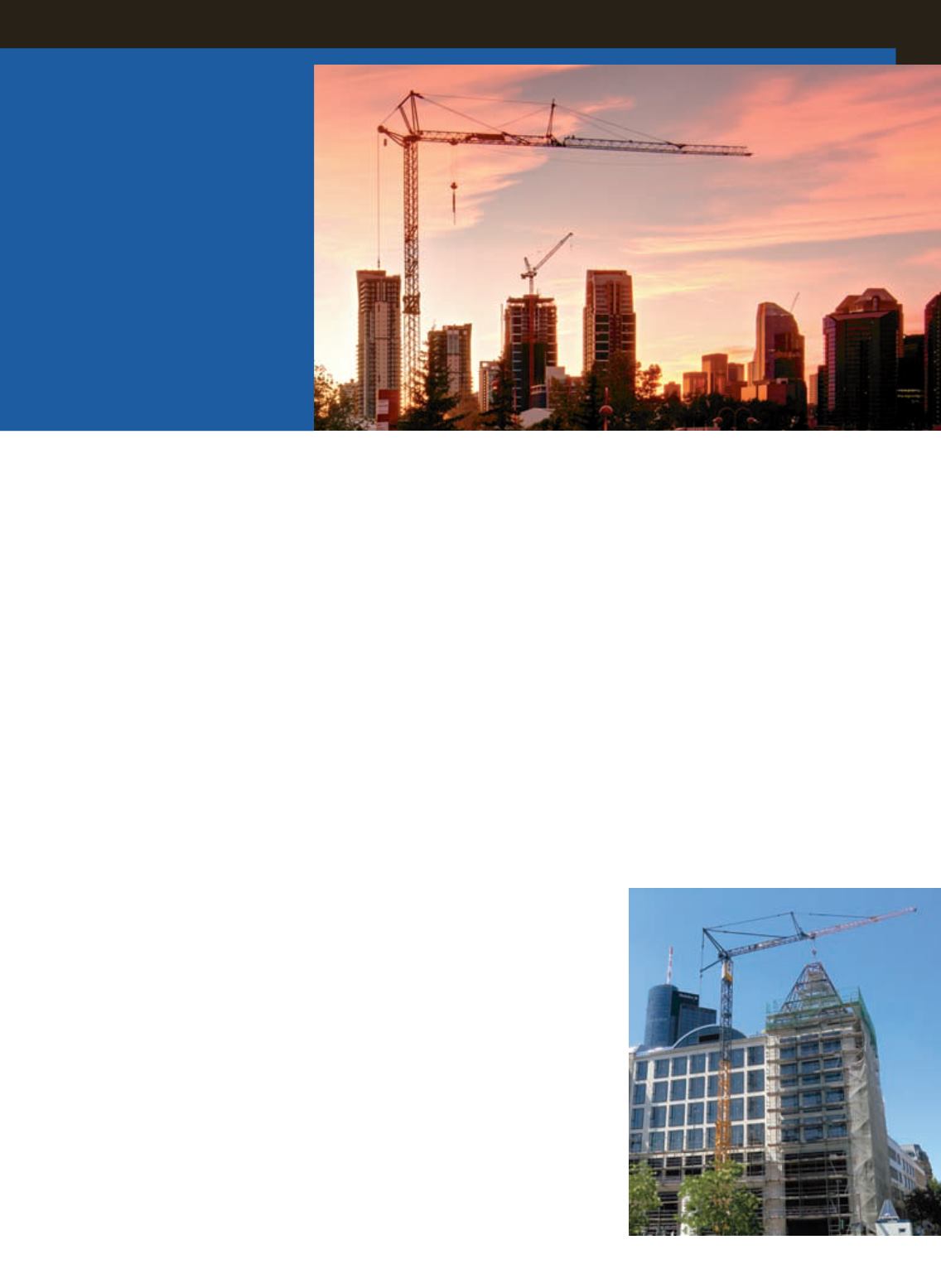
29
OCTOBER 2013
ACT
SELF-ERECTING TOWER CRANES
PRODUCT FOCUS
T
here are numerous benefits to
using a self-erecting tower crane
on a jobsite that might require a
unit with a small footprint yet large lifting
capacity. From multi-family residential
construction to infrastructure, self-
erecting tower cranes offer ease of setup
while being cost-effective in the long run.
“Self-erecting cranes have an up-and-
over reach that enables them to be
positioned very close to a building,”
says Mike Heacock, vice president of
North American tower crane sales for
Manitowoc. “This gives the crane a small
footprint when it’s erected on the project
site. Assembly and disassembly costs
for self-erecting cranes are much lower
when compared with traditional tower
cranes because self-erecting cranes require
a much smaller crew and less support
equipment to mobilize to a jobsite. They
are also a green lifting source due to their
electric motors, low noise and lack of
exhaust. Since the cranes stay stationary
on the jobsite, they do not produce dust or
track mud into the street like many other
types of lift equipment.”
Self-erecting tower cranes are mostly
used in narrow spots like inner city
areas where space is limited. If the site
duration is short, self-erecting cranes are
often considered as the more economical
solution. Self-erectors can also be used on
sites where the crane needs to be relocated
frequently.
The units can also be used with a
radio remote control, which allows the
operator to double as the rigger and thus
eliminating a second person. They are
also faster and less expensive to rent than
a mobile crane and, according to Gerd
Booch, area sales manager for Liebherr-
Werk Biberach GmbH, they are “more
efficient than a telehandler on limited
access sites.”
Eagle West Cranes, located in Vancouver,
British Columbia, Canada, owns one
of North America’s largest fleets of self-
erectors with 50 plus units. The crane
rental company has seen a huge uptick in
self-erector utilization over the last year.
“We have far more cranes out today than
we had out over the last four years,” says
Gary Davey, marketing manager for Eagle
West. “This year is trending upward to the
point where we’re seeing utilization into
the 60 percentage [range], which is huge.”
Davey says over the past four years
the company’s self-erecting fleet was
“completely underutilized” but that the
market is starting to turn around – to
a tune of a 35 percent uptick in overall
utilization over the last year.
In Arizona, Compass Equipment is
experiencing “very high” demand for its
self-erectors. Multi-family development,
high end custom homes and student
housing are driving the market.
“While the downturn caused significant
reduction in demand for all construction
equipment, multi-family and student
housing projects have kept demand for
Self-erecting
education
Eagle West has a
self-erecting tower
crane working at
the Scotiabank
Saddledome in
Calgary, pictured
here.
North America still lags
behind Europe when it
comes to self-erecting
tower crane use, but
that’s not to say the
slender lifters aren’t being
utilized in certain markets.
Lindsey Anderson
reports.
Liebherr’s 81 K, pictured here in
Frankfurt, Germany, is the most popular
self-erector, the company says.


